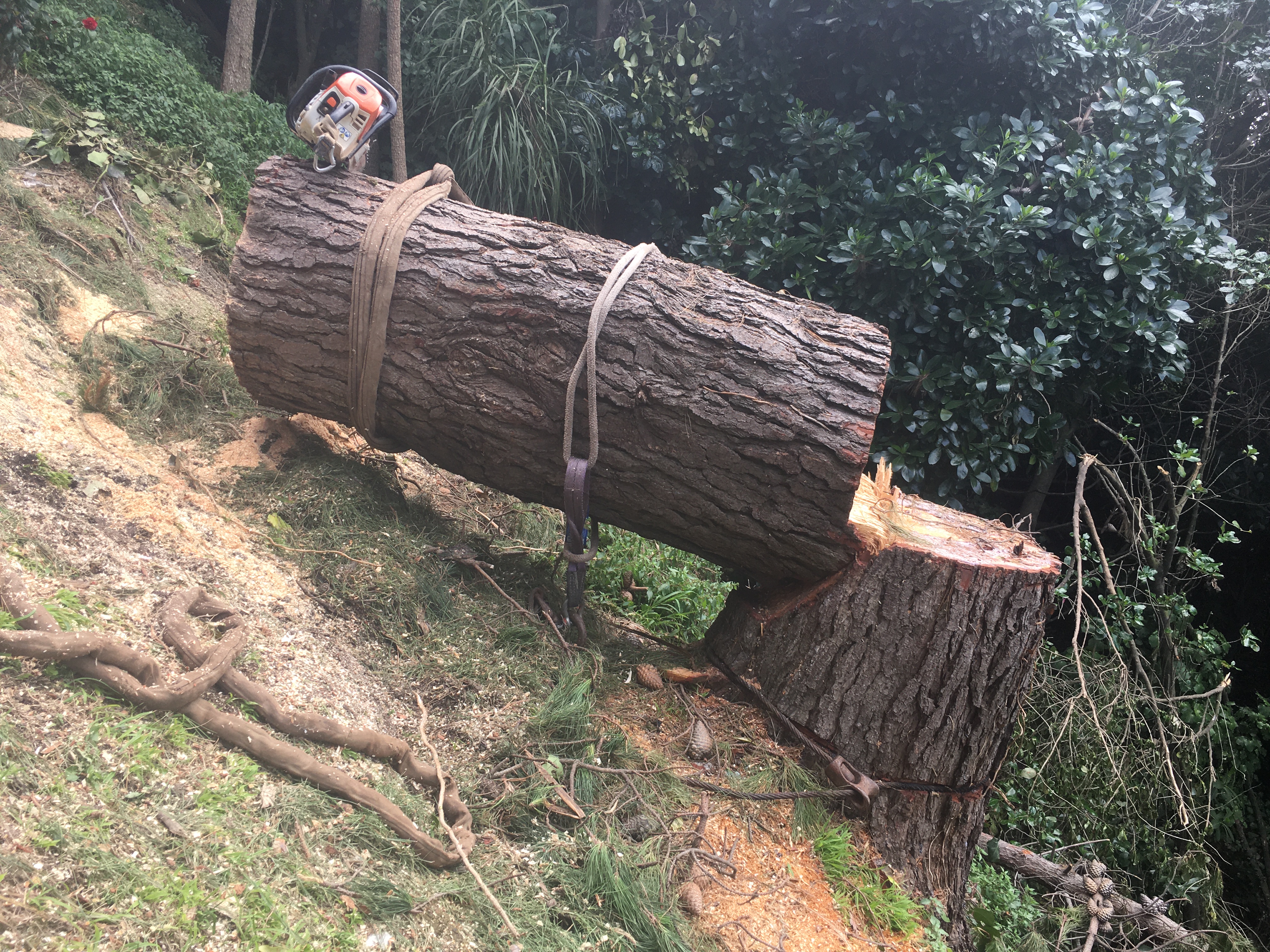I bought a cheap 500lb rope at Lowes, just to have in the truck. Rope is meant more for dragging game than pulling trees. I did use the rope to take a few limbs out of a tree hanging over my brothers shop. I used a toss rope to get the bigger rope over the limb and a slip knot to pull it tight. Then hooked to a 2705 massey tractor. I put tension on the rope only with the tractor. While I sawed, my brother just hand pulled the rope and that was enough to steer the limbs off the shop. There was one big limb we waited to cut until the next day when I could bring a 3/8 wire rope to pull the limb. Using a block, we ran the cable to another tree and hooked the end of it to my truck. With me lifted up in the tractor bucket, I made a back cut about half way thru the limb and then got down. Pulling with the truck we swung the limb off the shop roof and actually jerked it loose from the main trunk. Which is what we intended to do. My little 500lb test rope wouldnt have held up to that kind of pull and my truck would never get the traction to break the 3/8 cable. I took home about a full cord of limb wood and building or nobody got hurt.
Pulling tall trees with a vehicle is iffy to say the least. Number one, is your rope long enough to keep from pulling the tree down on the truck. I have found that the higher in the tree I can tie the rope, the easier it is to pull it the direction I want it to go. Get to high and you can break the top out of the tree and then have no control. Its sort of a judgement call and if you have never done it, you have no experience to make a judgment call. I would guess there are a lot of folks here that can take your tree down safely once they had a look at it. I also suspect a few here would know when they where getting in over their head and walk away. My thoughts are simply, its your tree and your house and your power lines and your life, if you have any doubts at all of dropping the trees safely, hire a professional. It could be cheaper than making a mistake that could get you killed, or possibly tear up your house.
Pulling tall trees with a vehicle is iffy to say the least. Number one, is your rope long enough to keep from pulling the tree down on the truck. I have found that the higher in the tree I can tie the rope, the easier it is to pull it the direction I want it to go. Get to high and you can break the top out of the tree and then have no control. Its sort of a judgement call and if you have never done it, you have no experience to make a judgment call. I would guess there are a lot of folks here that can take your tree down safely once they had a look at it. I also suspect a few here would know when they where getting in over their head and walk away. My thoughts are simply, its your tree and your house and your power lines and your life, if you have any doubts at all of dropping the trees safely, hire a professional. It could be cheaper than making a mistake that could get you killed, or possibly tear up your house.
























































